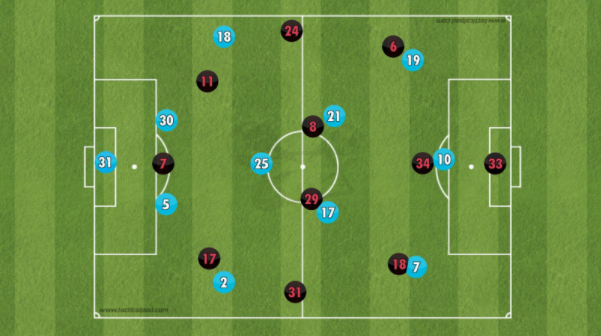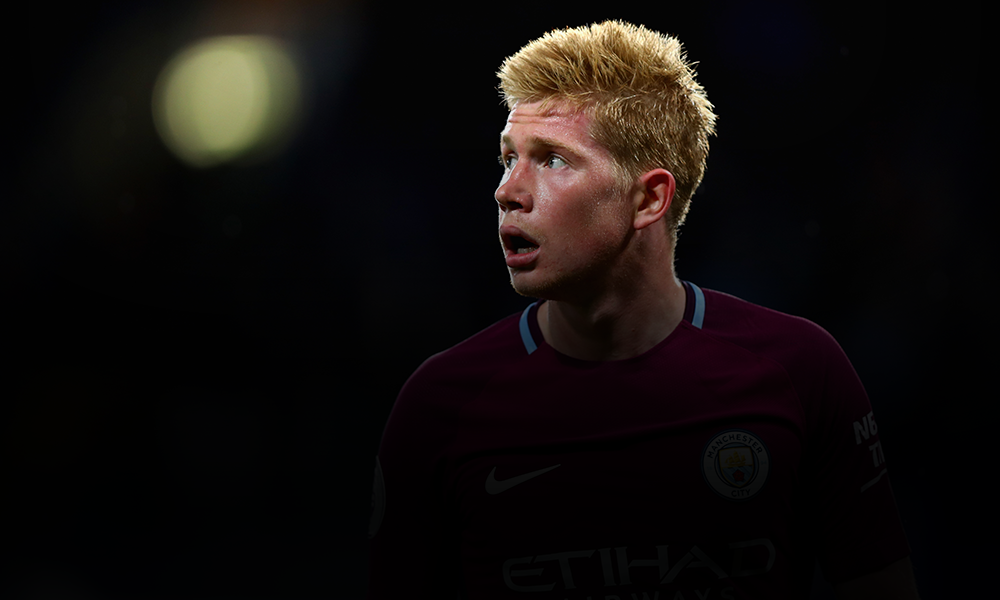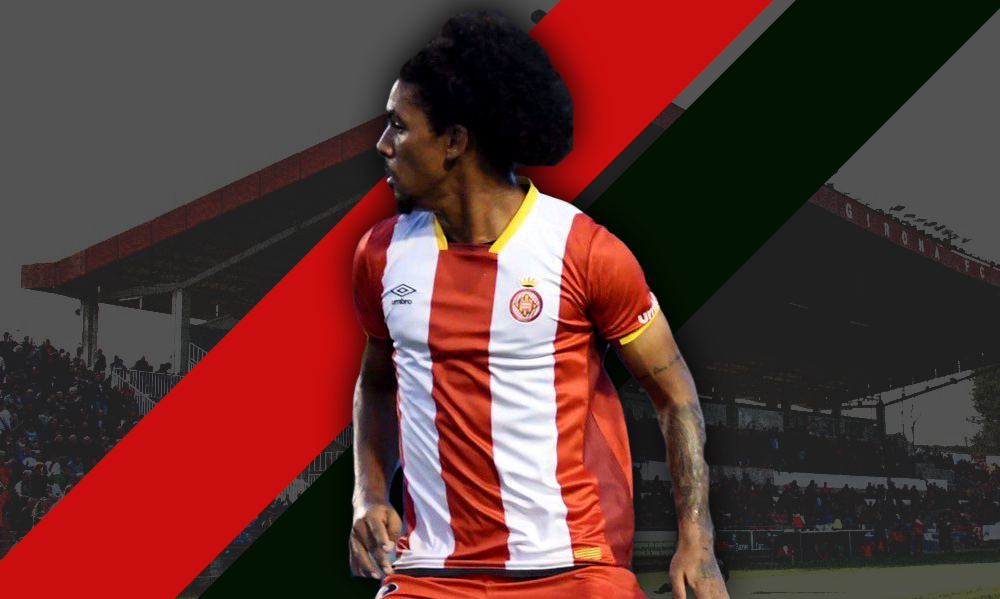In football, as well as many other sports and games, the key area of the pitch is the centre. If you can control the centre of the pitch this will most likely result in you controlling the game. This control can be achieved in a number of ways, numerical and qualitative superiority being the two main tools that can be used to control the centre of the pitch. Teams have used many different tactics to control the centre of the pitch, as well as tactics to prevent the key area on the pitch being the centre. Both these ideas have been successful but both have also failed. In this article, Ross Eaton looks at the double pivot.

A double pivot is the deployment of two defensive midfielders, who may be used to protect the defence in a deep block, to prevent the opposition space for counter-attacks, to keep possession by overloading in the first phase, the reasons are almost endless, the double pivot can be very useful at times.
The standard duties of a double pivot are as follows; to operate in the space between the defence and the attacking midfielders, to initiate attacks by distributing the ball in an intelligent fashion, to be key players in circulation and to prevent dangerous opposition attacks, being disciplined in positioning and limiting space in between the lines.
Advantages of the Double Pivot
The double pivot is often labelled as a clear indicator of a team that plays ‘boring’ football. Chelsea, who won the Premier League title in 2014/15 were labelled by even their own fans as a boring football team. The core of Chelsea’s side was a double pivot of Nemanja Matic and Cesc Fabregas. Matic provided huge defensive stability for the Blues while Fabregas would move into more advanced positions to support the attacking midfielders, changing Chelsea’s 4-2-3-1 into more of a 4-1-4-1. This is a huge advantage of the double pivot, it allows one of the pivots to move forward, supporting the attacking midfielders but also keeping his other duties in mind. The double pivot can be as flexible as you like and the two players may have totally different duties.
On the subject of the pivots having different duties, a strength of the double pivot is that one defensive midfielder can press the ball without leaving lots of space as the other pivot can stay in position, either marking the opposition number 10 or false 9 or maintaining a good position to react if the initial press is bypassed. The double pivot offers huge defensive stability and is an extremely useful tool to help teams maintain a structured shape. Having two defensive midfielders centrally prevents others being dragged out of position to press. If there was only one pivot and his press was bypassed, it would force a central defender to leave the defensive line and press the attacker, which in turn would leave a gap. Helping the defenders maintain solid positioning is a key part of Matic’s role at Chelsea, he will press almost anywhere in his own half to allow defenders to stay in the defensive line.
Another advantage of the double pivot is the protection one of the pivots can offer the less defensively capable of the two. For example, if a player such as a Toni Kroos, who has fantastic capabilities with the ball but not so good without, played as single pivot with two 8’s in front of him, he would likely leave his team exposed. However, if and when Kroos plays in a double pivot, his poor defensive attributes can be masked by a more defensive minded midfielder; the other midfield player can do most of Kroos’ defensive duties allowing Kroos to focus on dictating play from deep positions without the worry of losing the ball and putting his team under pressure, as he has a supporting midfielder alongside him.
How the Double Pivot can have a negative impact
Although the double pivot offers many advantages to teams both when attacking and defending, it can also have a negative effect on team and individual player performances. A problem with the double pivot highlighted particularly by Pep Guardiola is the space that it can deny a creative player. Guardiola himself played as a single pivot for Barcelona and with great success. However when Barça used a double pivot, Guardiola has admitted that he struggled. For this reason Guardiola rarely,if ever, lines his teams up with a double pivot.
However, this is only possible when a single pivot has good playmaking and defensive skills, not just one or the other. At Barça, Pep had Sergio Busquets and at Bayern he has Phillip Lahm, two of the world’s best pivots. Even if Pep didn’t have players as magnificent as these two, he would probably still use a single pivot, and use an 8 to protect the pivot, which is something he has done at Bayern in the past, using Thiago as a pivot to allow him to playmake from deep and playing Martinez as an 8 who supports Thiago in the defensive phase.
Another defensive issue with the double pivot is that a lack of communication would result in a very bad situation defensively. If both pivots pressed the ball, rather than one pressing and one maintaining position, it would result in a huge space in between the lines for opposition to play in. It also instantly wipes out two players if the press is bypassed, possibly leaving the team overloaded centrally.
The most obvious downside of the double pivot is that it removes a player from the attacking third of the pitch, to a more defensive role. Although this is not always a negative thing, it does most likely lower the chances of scoring.
Conclusion
The double pivot can’t be classed as a good or bad thing, it often has negative impact on team and individual player performance but it can obviously be a terrific tool to tighten up defensively or to add flexibility tactically. 7 of the last 8 semi-finalists in the World Cup have used a double pivot, which is surely some sort of indication that the double pivot can be used in a successful team.
The double pivot is perhaps pointless when a team have a Busquets-type player, who can fulfil both attacking and defensive duties in the role but if the team has two different types of midfielders then a double pivot is probably a very useful way of fitting both into the team, complimenting each other by masking the weaknesses.
- Tactical Analysis: Nice 4-0 Monaco | Favre’s efficient approach - September 14, 2017
- Tactical Analysis: Australia 2-3 Germany | German Defensive Scheme - June 22, 2017
- Tactical Analysis: Napoli 1-3 Real Madrid | Napoli unable to shift momentum - March 9, 2017

























































